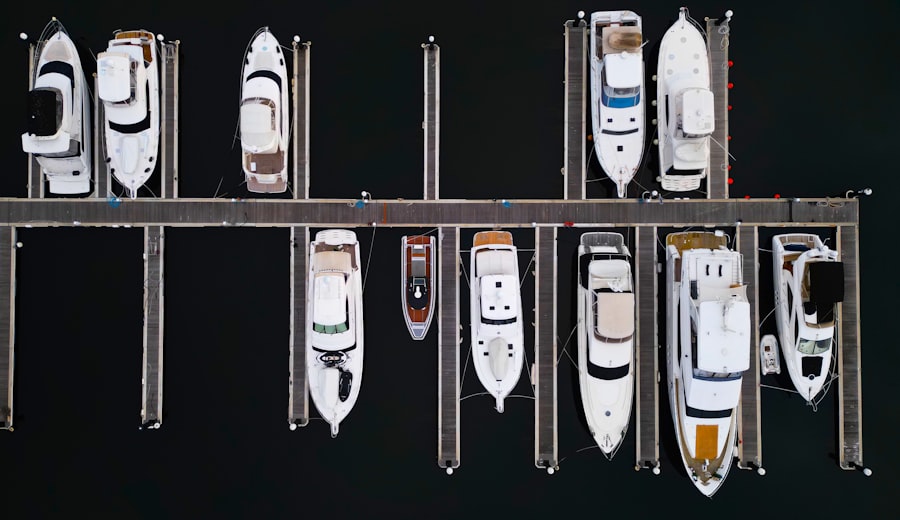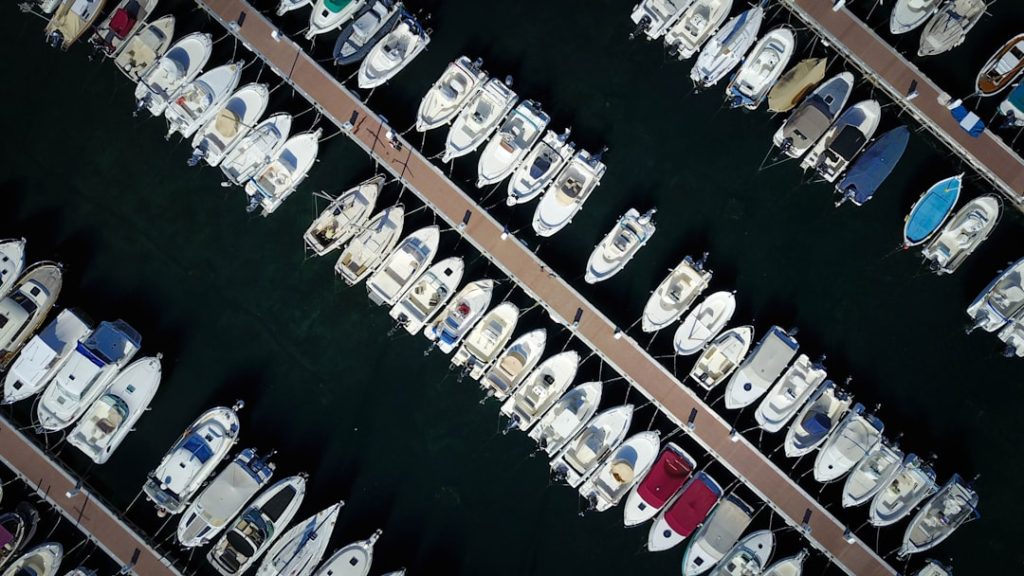The pricing of used boats is influenced by a myriad of factors that potential buyers must consider. One of the most significant determinants is the type of boat itself. Different categories, such as sailboats, motorboats, and personal watercraft, have distinct market values based on their popularity, functionality, and intended use.
For instance, a well-maintained fishing boat may command a higher price in coastal areas where fishing is a prevalent activity, while a luxury yacht might see better pricing in affluent regions. Additionally, the brand and model play a crucial role; established manufacturers with a reputation for quality often see their boats retain value better than lesser-known brands. Another critical factor is the geographical location where the boat is being sold.
Prices can vary significantly from one region to another due to local demand and supply dynamics. For example, boats in states with extensive waterways or coastal access, such as Florida or California, may be priced higher due to increased demand. Conversely, in areas where boating is less common, prices may be lower.
Seasonal fluctuations also impact pricing; for instance, during peak boating season, prices may rise due to heightened demand, while off-season sales might see discounts as sellers look to offload their inventory.
Key Takeaways
- Used boat prices are influenced by factors like type, age, condition, and market demand.
- Different boat types have varying average price ranges, affecting buyer expectations.
- Older boats or those in poor condition typically sell for less than newer, well-maintained ones.
- Market demand plays a crucial role in pricing, with high demand driving prices up.
- Effective negotiation and awareness of additional costs can help buyers get a fair deal.
Average Price Ranges for Different Types of Boats
When exploring the used boat market, it is essential to understand the average price ranges associated with various types of vessels. Small fishing boats, such as aluminum skiffs or inflatable dinghies, can often be found in the range of $1,000 to $10,000, depending on their size and condition. These boats are typically more affordable and cater to casual anglers or families looking for recreational outings on calm waters.
In contrast, larger fishing boats or center console models can range from $15,000 to $50,000 or more, particularly if they are equipped with advanced electronics and powerful engines. Sailboats present another category with diverse pricing structures. Entry-level sailboats can start around $5,000 to $15,000 for older models in fair condition.
However, well-maintained mid-range sailboats often fall between $20,000 and $100,000, especially if they are equipped for long-distance cruising or racing. Luxury yachts and high-performance sailboats can exceed $200,000 and reach into the millions for top-tier brands and custom builds. Understanding these price ranges helps buyers set realistic budgets and expectations when entering the used boat market.
How Age and Condition Impact Pricing

The age of a boat is a pivotal factor in determining its market value. Generally speaking, newer boats tend to command higher prices due to their modern features and technologies. However, age alone does not dictate value; the condition of the boat is equally important.
A well-maintained older boat can sometimes fetch a price comparable to that of a newer model that has been poorly cared for. Buyers should be aware that depreciation typically occurs most rapidly within the first few years of ownership; after that initial drop, the rate of depreciation tends to stabilize. Condition encompasses various aspects, including the structural integrity of the hull, the functionality of the engine, and the state of onboard systems such as electrical and plumbing.
A thorough inspection can reveal hidden issues that may significantly affect pricing. For example, a boat with a pristine exterior but an engine that requires extensive repairs will likely be priced lower than a similar vessel with minor cosmetic flaws but a fully operational engine. Buyers should consider investing in a marine surveyor’s services to assess the condition accurately before making a purchase.
Understanding the Role of Market Demand
| Metric | Description | Example Value | Importance |
|---|---|---|---|
| Market Size | Total number of potential customers or total sales volume in a market | 1,000,000 units/year | Helps estimate potential revenue and scale |
| Customer Demand Growth Rate | Annual percentage increase in demand for a product or service | 8% per year | Indicates market expansion and future opportunities |
| Price Elasticity | Measure of how demand changes with price variations | -1.5 | Guides pricing strategy to maximize revenue |
| Market Penetration Rate | Percentage of target market currently using the product | 25% | Shows current market share and growth potential |
| Consumer Preferences | Trends and shifts in what customers value or seek | Preference for eco-friendly products | Influences product development and marketing |
| Competitor Demand Share | Proportion of market demand captured by competitors | 40% | Helps assess competitive landscape and positioning |
Market demand plays a crucial role in shaping used boat prices. The boating industry is subject to trends influenced by economic conditions, consumer preferences, and even environmental factors. For instance, during economic downturns, discretionary spending on luxury items like boats often declines, leading to lower prices as sellers compete for buyers.
Conversely, when the economy is thriving and disposable income rises, demand for recreational boating increases, driving prices upward. Seasonality also affects demand; spring and summer months typically see heightened interest in purchasing boats as people prepare for the boating season. This seasonal spike can lead to increased prices as sellers capitalize on the influx of buyers eager to hit the water.
Additionally, specific trends within the boating community can influence demand; for example, an uptick in interest in eco-friendly boating solutions may lead to higher prices for hybrid or electric-powered vessels. Understanding these market dynamics can help buyers time their purchases strategically.
Negotiating Tips for Buying a Used Boat
Negotiating effectively when purchasing a used boat can lead to significant savings. One of the first steps in this process is conducting thorough research on comparable models in similar conditions to establish a baseline price. This knowledge empowers buyers during negotiations by providing concrete data to support their offers.
Additionally, being aware of any flaws or necessary repairs identified during an inspection can serve as leverage in discussions about price reductions. Building rapport with the seller can also facilitate smoother negotiations. Establishing a friendly dialogue can create an atmosphere of trust and openness, making it easier to discuss price adjustments without causing offense.
It’s also beneficial to approach negotiations with flexibility; being willing to compromise on certain aspects—such as payment terms or included accessories—can lead to a mutually beneficial agreement. Finally, having financing pre-arranged can strengthen a buyer’s position by demonstrating seriousness and readiness to close the deal.
Additional Costs to Consider when Purchasing a Used Boat

When budgeting for a used boat purchase, it’s essential to account for additional costs beyond the initial purchase price. One significant expense is insurance; marine insurance rates vary based on factors such as the type of boat, its value, and how it will be used. Buyers should obtain quotes from multiple insurers to find coverage that fits their needs and budget.
Maintenance costs are another critical consideration. Boats require regular upkeep to ensure safety and performance; this includes routine tasks such as engine servicing, hull cleaning, and winterization procedures. Depending on the type of boat and its usage frequency, these costs can add up quickly.
Additionally, potential buyers should factor in storage fees if they do not have space at home or access to free docking facilities. Fuel costs also need consideration; larger boats typically consume more fuel than smaller ones, impacting overall operating expenses.
Where to Find and Compare Used Boat Prices
Finding and comparing used boat prices requires utilizing various resources effectively. Online marketplaces such as Boat Trader and YachtWorld offer extensive listings that allow buyers to filter by type, price range, location, and other criteria. These platforms often include detailed descriptions and photographs that help buyers assess options from the comfort of their homes.
Local classifieds and community bulletin boards can also yield valuable leads on used boats for sale. Many sellers prefer listing their boats locally to avoid shipping costs associated with long-distance sales. Attending boat shows or local marine expos provides an opportunity not only to view boats firsthand but also to network with sellers and industry professionals who may have insider knowledge about upcoming sales or private listings not yet advertised online.
Tips for Selling Your Used Boat at a Fair Price
Selling a used boat at a fair price involves several strategic steps that can enhance visibility and attract potential buyers. First and foremost is ensuring that the boat is clean and well-presented; thorough cleaning both inside and out can make a significant difference in first impressions. Addressing minor repairs or maintenance issues before listing can also enhance perceived value and justify asking prices.
Effective marketing is crucial in reaching potential buyers; utilizing online platforms like social media groups dedicated to boating enthusiasts can expand exposure beyond traditional listings. High-quality photographs showcasing the boat from multiple angles—both interior and exterior—can capture attention more effectively than generic images. Providing detailed descriptions that highlight unique features or recent upgrades can further entice buyers by showcasing what sets your boat apart from others on the market.
In conclusion, understanding the multifaceted nature of used boat pricing requires careful consideration of various factors ranging from type and condition to market demand and additional costs associated with ownership. By equipping themselves with knowledge about average price ranges and effective negotiation strategies while also being mindful of where to find listings and how to present their own boats for sale, both buyers and sellers can navigate the used boat market more successfully.


